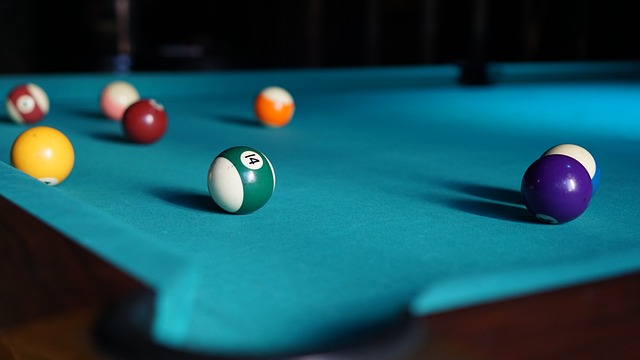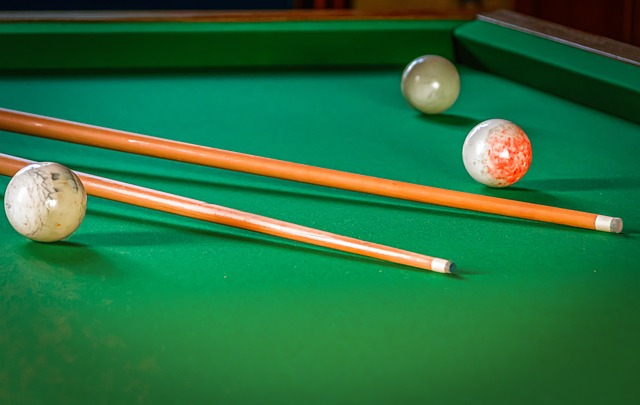A pool table's weight, typically between 45-200 kg (100-440 lbs), stems from its slate foundation (real or fiberboard), robust metal or wood framework, and careful construction. Slate thickness, table size, material quality, manufacturing process, and age also influence the slate's weight. "How heavy is a pool table?" varies accordingly, ensuring stability, durability, and optimal gameplay conditions.
Curious about the weight of a pool table’s slate? It’s a common question among billiards enthusiasts. In this article, we’ll guide you through the process of understanding just how heavy this component truly is. From exploring the materials and construction methods to identifying factors that influence the slate’s weight, you’ll gain valuable insights. We’ll answer your query: “How heavy is a pool table?” and provide essential knowledge for anyone interested in the mechanics behind these classic gaming surfaces.
- Understanding the Components of a Pool Table
- Materials and Construction: The Weight Factor
- Factors Affecting the Slate's Weight
Understanding the Components of a Pool Table

A pool table is more than just a playing surface and set of cues; it’s a complex assembly of parts designed to ensure smooth gameplay and longevity. Understanding the components that make up this iconic furniture is key to grasping why pool tables, especially those made with high-quality materials, carry significant weight.
The slate, often considered the heart of the table, is typically crafted from dense, durable material like fiberboard or real slate. While real slate adds an air of sophistication and plays a role in the table’s sound when balls collide, fiberboard slates are more common due to their affordability and consistent performance. Regardless of material, these slates are heavy to ensure stability during play, with a standard pool table slate weighing around 45-60 kilograms (100-135 pounds). This weight contributes to the overall heft of the table, which can easily top 200 kilograms (440 pounds) when assembled and ready for action.
Materials and Construction: The Weight Factor

Pool tables are meticulously crafted, combining robust materials and precise construction techniques to ensure durability and optimal playing conditions. The primary material used in the slate surface is, as the name suggests, slate—a natural rock known for its hardness and stability. This choice of material significantly contributes to the overall weight of the table. Slate is dense and heavy, which provides a solid foundation and helps in maintaining the table’s shape over time.
The construction process involves carefully layering and binding multiple pieces of slate to create a seamless, uniform surface. This intricate method not only enhances the table’s aesthetic appeal but also adds to its weight. Additionally, the framework supporting the slate is typically made from sturdy metals or wood, further increasing the overall mass of the pool table. Understanding these factors gives us a clearer picture of why a pool table can be quite heavy—a testament to its quality and longevity in the game.
Factors Affecting the Slate's Weight

The weight of a pool table’s slate can vary significantly depending on several factors. One of the primary considerations is the size of the table; larger tables generally have heavier slates to maintain stability and ensure accurate ball roll. The thickness of the slate is another crucial element; thicker slates are denser and, therefore, heavier. High-quality slates often have a greater density, contributing to their weight. Additionally, the type of material used in construction can impact the slate’s weight; some materials are naturally denser than others.
Another factor affecting weight is the manufacturing process. Advanced techniques and high-end manufacturers may employ methods that result in lighter slates without compromising strength or performance. Conversely, budget-friendly tables might use simpler construction methods that lead to heavier slates. Finally, age plays a role; older tables with vintage slates can be significantly heavier than modern counterparts due to differences in manufacturing standards over time.
A standard pool table slate typically weighs between 150-200 pounds (70-90 kg), depending on factors like size and construction. This weight is distributed evenly to ensure stability during play, making it an integral part of the table’s structure. Understanding these components and materials is key to appreciating the craftsmanship behind every pool table, as well as knowing what to consider when choosing one for your games room. In terms of ‘how heavy is a pool table?’, this range offers a solid foundation for both professional tournaments and casual games alike.
